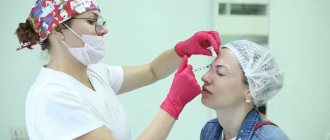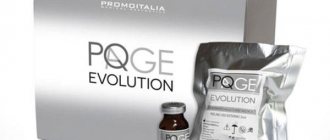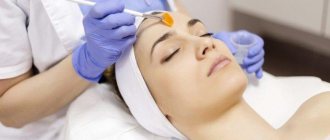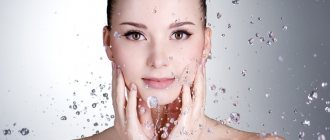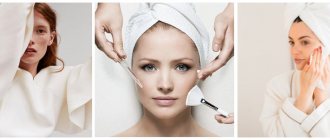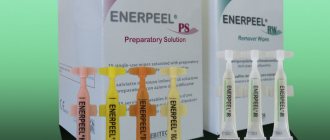Many consider phenol peeling one of the most effective procedures for skin rejuvenation. Others argue that it causes more harm to the body than good due to the toxicity of the drug used.
Before agreeing to such peeling or categorically refusing it, it is worth studying the principle of the action of the main component - carbolic acid.
Phenol peeling
Phenol peeling is an exfoliation of the skin. It is carried out using carbolic acid.
Traditional components of phenol peeling compositions are:
- distilled water;
- glycerol;
- oil that accelerates the absorption of carbolic acid into the epidermis;
- phenol;
- propylene glycol.
One of the main features of phenol peeling is its high level of toxicity.
This method is considered a dermatosurgical procedure, which must be performed by a specialist of a high level of competence. Deep phenol peeling can only be performed after a detailed medical examination of the cardiovascular system, liver and kidneys. Deep peeling affects all layers of the dermis. The long recovery period after the procedure, up to 1 year in some patients, and the high probability of severe complications require extreme attention.
If you intend to undergo a phenol peel procedure solely for cosmetic purposes, it is recommended to resort to it only if there is no alternative solution to your problem.
Indications and contraindications for phenol peeling procedures
- acne;
- photoaging;
- sagging skin;
- scars on the skin;
- fine-wrinkled type of aging;
- significant hyperpigmentation;
- severe stage demodicosis;
- folds and deep wrinkles;
- recovery after major operations.
Contraindications in this case include:
- impaired skin sensitivity;
- pregnancy and lactation;
- hypertrichosis;
- herpetic disease in the acute stage;
- injuries of any nature in the processing area;
- IV-VI skin phototype according to Fitzpatrick;
- fungal infections;
- diabetes;
- the need to take isotretinoin in the next 6 months preceding the peeling procedure;
- skin diseases;
- periods of intense insolation;
- mental disorders;
- diseases of infectious origin;
- increased body temperature;
- pathology of the thyroid gland;
- menstruation period;
- weather sensitivity;
- oncological diseases;
- liver and kidney diseases;
- individual intolerance to phenol peeling components;
- damage to the epidermis;
- cardiovascular diseases;
- numerous nevi;
- burns in the treatment area;
- keloid scars;
- age up to 18 years.
Pros and cons compared to other types of peeling
Pros of phenol peeling
single procedure;- pronounced healing and rejuvenating effect;
- maintaining the result for 7-10 years;
- the ability to carefully control the application of the composition.
Phenol peeling results:
- activation of human body systems at all levels;
- skin rejuvenation;
- getting rid of scars, fine and deep wrinkles;
- getting rid of age spots;
- significant improvement in skin structure;
- increasing overall skin tone;
- normalization of skin functions.
Disadvantages of phenol peeling
- the possibility of severe complications;
- long recovery after the procedure;
- the need for anesthesia or pain relief;
- serious pre-peeling preparation;
- the procedure is quite painful;
- before the procedure it is necessary to undergo a large number of examinations;
- the need for cardiac monitoring during peeling;
- a large number of contraindications;
- heavy load on the heart and excretory systems of the body.
Pre-peeling preparation
Preparation includes:
- medical examination of the cardiovascular system, liver and kidneys;
- 3 months before the procedure you need to refrain from being in direct sunlight and solarium;
- taking angioprotectors and antioxidant drugs for 2-3 weeks;
- cessation of medial exfoliation, laser procedures and mechanical dermabrasion 6 months before the procedure;
- cancellation of all procedures that injure the skin (shaving, hair removal) 10 days before peeling;
- taking aromatic retinoids must be stopped 6 months before the peeling procedure;
- it is necessary to inform the doctor performing the procedure about the medications you are taking;
- treating the skin with weak solutions of acids for whitening for 5-7 weeks.
Stages of phenol peeling
The room in which the phenol peeling procedure is carried out must be equipped with a fume hood and well ventilated, since the vapors released during the procedure are toxic.
The main stages of phenol peeling:
- intravenous anesthesia by an anesthesiologist (for deep peeling) or local anesthesia (for medium and superficial peeling);
- removing makeup using a rough sponge and further drying the skin;
- degreasing the skin with alcohol;
- applying the phenolic preparation in even strokes. The interval between different areas should be at least 5 minutes;
- neutralization of carbolic acid using a special film mask, after which a neutralizing substance is applied to it after drying;
- applying sunscreen.
The duration of the procedure is from 40 to 120 minutes. It all depends on the individual characteristics of the patient’s skin.
Post-peeling skin care
After completing the procedure, the patient feels a burning sensation in the treated areas. If the pain after phenol peeling cannot be tolerated, you can use painkillers.
On the first day after the procedure, you should avoid getting liquid on the skin, because water enhances the penetration of phenol and can lead to skin burns. You should drink water through a straw and avoid brushing your teeth.
The mask is removed 2 days after the procedure along with dead skin particles, revealing bright red renewed young skin.
A superficial tightening crust begins to form starting from 2 days. During this period, the use of panthenol spray is prescribed. Under no circumstances should crusts be removed forcibly; this can lead to scarring.
Full recovery occurs on average within 10-14 days. The full process of skin maturation is completed in approximately 7-12 months. Painful sensations and redness of the skin disappear on average after 2 months. During this entire time, it is recommended to use panthenol spray.
The following are prescribed as post-peeling care:
- vitamins A and C;
- sunscreens with SPF 50+;
- antioxidants;
- bleaching agents;
- moisturizing complexes based on hyaluronic acid.
Possible complications after phenol peeling
- enlarged pores;
- 3rd degree burn;
- exacerbation of herpes;
- allergic reactions;
- atrophic skin change;
- diseases of a viral, infectious and fungal nature;
- the appearance of persistent swelling of soft tissues;
- due to oily skin and impaired renal and liver function, hyperpigmentation may occur;
- loss of the skin's ability to produce pigment;
- the appearance of keloid scars;
- formation of milia;
- pathological increase in skin sensitivity;
- the appearance of sharp boundaries between treated and untreated zones;
- exacerbation of skin diseases;
- decreased immunity;
- the appearance of persistent facial erythema;
- appearance of depigmented areas on the skin;
- hyperkeratosis;
- the risk of renal and liver failure and cardiac arrhythmia.
Cost of phenol peeling
Average cost of a phenol peeling procedure:
- superficial - 3000 rubles;
- middle - 12,000 rubles;
- deep - 25,000 rubles.
Precautionary measures
If the dosage is exceeded, phenol negatively affects the functioning of the nervous system, resulting in severe headache, weakness and clouding of consciousness - this can lead to failure of internal organs and death.
Therefore, before carrying out phenol cleansing, it is important to study all contraindications and possible negative consequences.
Contraindications
Prohibitions on peeling with phenol:
- liver or kidney dysfunction;
- diabetes;
- skin diseases and fungus;
- infectious diseases;
- dysfunction of the thyroid gland;
- the period of bearing or feeding a child;
- respiratory diseases in acute or chronic form;
- heart failure.
After peeling, sunbathing is contraindicated - this increases the risk of developing cancer and hyperpigmentation.
Side effects and complications
If the dosage of phenol is incorrectly calculated, the following complications may arise:
- disruption of the heart;
- exacerbation of skin diseases or herpes;
- increased swelling;
- deterioration of the immune system;
- the appearance of deep scars in the lips or eyes;
- respiratory tract paralysis;
- cerebral hypoxia.
Phenol cannot be used to treat skin areas with open wounds - the substance enters the body with the blood, causing a toxic effect on it.
phenol peeling
It is very important for every woman, no matter how old she is, to be or remain young, beautiful and look good. The best cosmetologist is, of course, nature; a 15-year-old girl practically does not need to use cosmetics if there are no skin problems and clear dermatological indications.
Many women, in pursuit of beauty, even at this age, would probably gladly sell their soul to the devil, but in the absence of a “buyer”, they often choose very risky and dangerous procedures for rejuvenation, such as phenol peeling , for example.
Peeling is a procedure for “replacing skin” with a younger one by removing (exfoliating) its upper layers at varying depths depending on the intensity of chemical exposure (epidermis, basement membrane, dermis) using various acids or other aggressive chemicals. Today there are quite a few different types of peeling, some of which bring extremely positive results, for example, fractional laser peeling
, fruit peeling.
However, there are also very dangerous procedures, although they are still considered effective in narrow circles. One of these is phenol peeling.
Phenol and peeling. All the pros and cons
Phenol peeling is based on the effect on the skin of carbolic acid (phenol), which, in accordance with the international classification, is classified as one of the strongest chemical toxic substances.
If it comes into contact with the skin, it easily penetrates into the body and can cause general systemic toxic effects. In case of phenol poisoning, disruption of the kidneys and liver, disruption of the central nervous system, irritation of the respiratory tract and mucous membrane are inevitable, and the development of cardiac arrhythmia and cardiac arrest is possible.
Phenol peeling has over 50 contraindications for use
.
Before carrying out it, it is necessary to undergo a comprehensive medical examination, as well as carry out very thorough preparation for the procedure, such as stopping the use of certain medications, visiting solariums and sunbathing, epilating or shaving is prohibited 10 days before the expected date of peeling.
- For this and many other reasons, phenol peeling is used in the most extreme cases, if the use of laser resurfacing is contraindicated, and only by a very experienced surgeon in a hospital setting under general anesthesia.
- Obtaining approval for the use of phenol peeling is not so easy; cosmetology clinics and medical centers will need to sign documents stating that they are aware of its high toxicity and traumatic nature, and we should not forget about the severe psycho-emotional consequences.
- In many Western and Eastern countries, the question of banning this procedure has been repeatedly raised at the highest government level due to its extreme danger to the patient’s health.
Consequences of phenol peeling
But even with a successful outcome of peeling with phenol, this is always accompanied by some disturbances in the functioning of individual organs and, naturally, on the part of the skin itself.
High psychological pressure is 100% inevitable, because after the procedure you will need regular observation and examination by a doctor, a very difficult and painful rehabilitation period, a complete lifelong refusal to visit the solarium and tanning, and year-round use of sunscreen for the face.
During the year, a number of procedures are prohibited, and you will not be able to use decorative cosmetics for a long time. In order to improve the health of the body, the doctor will definitely prescribe a course of therapeutic treatment of the liver and urinary system using various medications.
At the same time, the full effect of phenol peeling will also be noticeable only after a year, when the skin is completely regenerated. Until this moment, it may remain constantly hyperemic (red) and slightly swollen.
- We can safely conclude that phenol peeling is not the most successful remedy for combating wrinkles and skin defects, or rather, it is completely unsuccessful.
- In this case, for the beauty of your face or body, you will have to take risks, or even sacrifice what is truly the most valuable thing - health.
- The Unimed+ Cosmetology Clinic does not perform this procedure, considering it dangerous to the health of patients.
- OR MAKE AN APPOINTMENT
Indications
Mechanical and chemical peelings are very effective procedures in cases where the skin of the face is oily, problematic, and seborrhea is observed. It is also effective on skin with signs of photoaging, without severe sagging and stretching.
Peeling is mainly done on the face, but it can also be used on other parts of the body: arms, hips, neck, décolleté, abdomen, etc.
Dermatologists around the world have officially adopted the chemical method as one of the main procedures for treating acne in their patients. It is no secret that teenagers most often suffer from this disease, and this type of skin renewal can be successfully used to heal them.
It is believed that this procedure is designed to solve exclusively aesthetic problems, but this opinion is completely wrong. Today, peeling is successfully used to treat many skin diseases, such as acne, papillomas, dyschromia, etc. It also allows you to effectively cleanse the skin of dead particles, stimulate cells to work actively, improve complexion and remove age spots, get rid of wrinkles and “ crow’s feet”, normalize the functioning of the sebaceous glands and generally help patients look fresher and more attractive.
Phenol facial peeling
Phenol facial peeling is a cosmetic procedure for deep chemical cleansing of the skin with a rejuvenating effect, which is carried out due to the effect of carbolic acid on the skin. Cosmetologists use carboxylic acid in cauterizing procedures.
The content of the article:
Contact of phenol with the skin leads to burning of all connective fibers, destruction of old collagen fibers and elastin. In response to this process, cells produce new fibers, renewing the skin at all levels, tightening it and removing wrinkles.
The main advantage of the procedure is the long-lasting result (about 5-10 years), comparable to the result of plastic surgery.
Phenol peeling includes the following components:
- phenol;
- cosmetic oils that soften the effects of carboxylic acid on the skin;
- liquid glycerin;
- distilled water;
- sometimes salicylic acid is added.
The peeling procedure is performed once.
Indications for phenol peeling
Typically, the phenol peeling procedure is performed on women after forty years, when the skin undergoes obvious age-related changes.
But there are other indications:
- deep wrinkles and folds, obvious skin aging;
- pigment spots and burn marks;
- stretch marks;
- skin rashes, acne and post-acne, the presence of pimples;
- hypertrophic scars;
- seborrheic and solar keratosis;
- raised scars after surgery;
- sagging and sagging skin after sudden weight loss;
- decreased elasticity of the eyelids;
- demodicosis
Contraindications to the phenol facial peeling procedure
Carboxylic acid is a poisonous, toxic substance, so the phenol peeling procedure must be carried out with open windows.
As a consequence of this, the phenol peeling procedure must be carried out with great care, taking into account all the limitations:
- age under 35 years (recommended after 40);
- age over 60 years;
- herpes;
- dark skin tone;
- fungal infections;
- fresh tan;
- allergic reactions and individual intolerance to the procedure;
- skin damage and fresh wounds in the peeling area;
- menstruation;
- skin and cancer diseases;
- chronic kidney or liver diseases;
- diabetes;
- heart failure;
- pregnancy and lactation;
- taking medications that contain aspirin.
Cosmetologists recommend doing a test for an allergic reaction on the wrist before performing the phenol peeling procedure.
Phenol facial peeling
It is better and safer to carry out a complex phenol peeling procedure with the help of a cosmetologist or a specialist competent in this matter.
Before carrying out phenol peeling, you should prepare your facial skin and the body as a whole.
A week before the peeling procedure, a cosmetologist usually recommends taking a preventive course of using antifungal and immune drugs.
Cosmetologists often use anesthesia (intravenously or locally) before the phenol peeling procedure to eliminate discomfort and pain for the patient.
Immediately before the procedure, prepare the skin in stages:
- cleanse the skin of cosmetics;
- degrease with soapy water using a hard sponge;
- treat the skin with a scrub;
- I dry my face;
- degrease with an alcohol solution.
Reviews
Margo:
I have already undergone 3 phenol peeling procedures, and I have 10 of them in total. But I can already see a visible result: the skin is smoothed, wrinkles disappear, it looks moisturized and nourished, fresh and radiant. I thought it would be painful, but it turned out to be only pleasant. Just a slight tingling sensation, which didn't scare me at all. I am pleased with the result and am ready to complete the entire course.
Victoria:
I’ve done peelings before and went to my cosmetologist. But this was my first time going to phenol peeling. I really liked both the procedure itself and the result obtained. My skin became visually younger, more elastic and fresh. I began to look several years younger. I regret that I didn’t do this earlier, but better late than never.
Phenol peeling – deep exfoliation of the skin
Update date: 04-01-2021
The phenol peeling procedure in aesthetic medicine guarantees a long-term rejuvenating effect comparable to the results of plastic surgery. At the same time, natural facial expressions are preserved. In just one procedure, not only small superficial wrinkles are eliminated, but also deep ones. The skin becomes elastic and fresh.
The pronounced rejuvenating effect of the procedure lasts up to 10 years.
What is phenol peeling?
Deep phenol peeling is a minimally invasive procedure. It uses a chemical solution of carbolic acid (phenol). Using this substance, the outer layer of the epidermis is removed up to 0.6 millimeters deep. The result is that the regeneration process and active synthesis of new tissue cells are launched, maintaining the firmness and elasticity of the skin.
Cosmetologists perform superficial, medium and deep peeling. In addition to carbolic acid, the peeling contains essential oils, distilled water, propylene glycol, and glycerin. Modern phenol peels are characterized by low toxicity along with a radical rejuvenating effect.
Preparation for the procedure
For a chemical peel, you must first undergo a medical examination, checking the condition of the cardiovascular system, kidneys and liver. For 2-3 months before the procedure, you should avoid prolonged contact with the sun's rays and avoid visiting the solarium.
It is recommended to start using special products with fruit acids 5-8 weeks before the procedure to even out the top layer of the epidermis.
Hair removal, shaving and laser procedures are prohibited. If the patient is taking any medications, you must inform the doctor about this: some medications are incompatible with carbolic acid.
When is phenol peeling indicated?
Reviews from patients and data from cosmetologists indicate that phenol peeling is one of the most effective means for:
- eliminating hyperpigmentation and sagging skin;
- combating facial wrinkles and age-related changes caused by photoaging;
- elimination of postoperative scars, post-acne.
The procedure is carried out under the supervision of an experienced specialist who takes into account the patient’s health condition and skin characteristics.
How to perform a deep chemical peel
The procedure consists of several stages:
- First, the area of skin is cleaned with a sponge soaked in a soap solution. The face is dried, treated with an antiseptic and a 10% lidocaine solution.
- The phenol peeling mixture is applied to the face in smooth strokes. The procedure begins with areas with rougher skin and ends with areas with more delicate, sensitive skin.
- After the solution has dried, a film mask is applied to the treated areas. For 48 hours, patients are strongly advised not to come into contact with water and control their facial expressions. Food must be taken through a straw.
The procedure lasts from 30 minutes to 2 hours.
Recovery period
2 days after the procedure, the cosmetologist removes the mask along with the rejected epithelium. Cleaned skin areas are treated with an analgesic and antiseptic, and moisturized if necessary. After this, a crust forms on the face that cannot be touched.
During the rehabilitation period, panthenol is used to enhance the regeneration of the epidermis. It will take at least 2 weeks for the skin to renew. During the first week after the procedure, severe swelling, peeling and redness of the skin occur. It is not recommended to lead an active social life at this time.
Already three weeks after cosmetic procedures, you can use decorative cosmetics. Throughout the recovery period, it is recommended to use creams with a high ultraviolet protection factor, take antioxidants and vitamins A and C. Sunbathing is strictly prohibited.
The final results of a chemical peel will be visible after a few months.
Contraindications
Phenol peeling is recommended for women over 40 years of age. The procedure is not recommended for:
- diseases of the thyroid gland;
- malignant and benign neoplasms;
- tendency to form keloid scars;
- diabetes mellitus;
- individual intolerance to phenol;
- pathologies of the cardiovascular system;
- acute infectious diseases;
- impaired skin integrity at the treatment site;
- fungal diseases.
In addition, the procedure is contraindicated for pregnant and lactating women and persons under 18 years of age.
results
The peeling result is comparable to a circular facelift. In the absence of contraindications, the client is guaranteed the following results:
- general improvement in skin condition;
- disappearance of hyperpigmentation, scars;
- clear oval face;
- eliminating wrinkles, nasolabial folds, increasing skin firmness and elasticity.
The result lasts up to 10 years. The procedure is carried out only in a hospital setting.
Prices for the procedure
There is a promotion in the cosmetology department: any MCP superficial peeling – only 2200 rubles! Follow the updates on our website.
We use the following lines of chemical peels: MediDerma (SESDERMA), MediControlPeel, ENERPEEL, NATINUEL.
- CHEMICAL PEELINGS ENERPEEL
- SUPERFICIAL, SUPERFICIAL-MEDIUM PEELINGS
- MEDIUM, MEDIUM-DEEP PEELINGS
CHEMICAL PEELINGS ENERPEEL
| Name of service | price, rub. | Promotion! |
| Salicylic peeling ENERPEEL SA | 3000 rub. | — |
| Glycolic peeling ENERPEEL GA 70% | 3000 rub. | — |
| Almond peeling ENERPEEL MA | 3000 rub. | |
| Peeling for neck and back ENERPEEL SA-CB | 4200 rub. | — |
| Jessner Peel ENERPEEL JR (salicylic acid 15%, lactic acid 20%, resorcinol 15%) | 4000 rub. | — |
| Peeling TCA ENERPEEL (trichloroacetic acid 25%) | 4500 rub. | — |
| Peeling TCA ENERPEEL STRONG (trichloroacetic acid 40%) | 5500 rub. | — |
| Pyruvic peeling ENERPEEL PA 50% | 3200 rub. | — |
SUPERFICIAL, SURFACE-MEDIUM PEELINGS:
| Name of service | price, rub. | Promotion! |
| Chemical superficial peeling MediControlPeel (pyruvic, milky, salicylic, glycolic, almond) | 2200 rub. | — |
| Almond peeling NATINUEL | 2700 rub. | 2300 rub. |
| Glycolic peeling NATINUEL | 2500 rub. | |
| Glycolic peeling MEDIDERMA | 2500 rub. | |
| Glycolic peeling MCP | 2200 rub. | |
| Glycolic whitening peeling MCP | 2500 rub. | |
| Peeling "Anti Acne" ACNE STOP NATINUEL | 3500 rub. | — |
| Milk peeling MEDIDERMA with DMAE | 3000 rub. | — |
| Almond peeling with DMAE Simildiet | 2300 rub. | — |
| Almond peeling MEDIDERMA | 2500 rub. | — |
| Almond peeling MCP | 2200 rub. | |
| Salicylic peel MCP | 2200 rub. | |
| Salicylic peeling MEDIDERMA | 2500 rub. | |
| Azelaine peeling Simildiet | 2100 rub. | — |
| Azelaine peeling MEDIDERMA | 2500 rub. | — |
| MEDIDERMA pyruvic peeling | 3000 rub. | |
| Superficial Jessner peel MCP (1 layer) | 2200 rub. | — |
| Coral peeling Rose-de-Mer Christina | 3500 rub. |
MEDIUM, MEDIUM-DEEP PEELINGS:
| Name of service | price, rub. | Promotion! |
| Jessner peeling MCP classic medium | 3100 rub. | — |
| Jessner peeling MEDIDERMA | 3500 rub. | — |
| Jessner peeling modified MEDIDERMA | 3500 rub. | — |
| Yellow peeling Yellow Peels Kosmoteros | 3500 rub. | — |
| Yellow peeling MEDIDERMA Retises CT | 4500 rub. | HIT! |
| Yellow intensive peeling MEDIDERMA Retises Forte | 5000 rub. | — |
| Yellow peeling MCP | 4000 rub. | — |
| Yellow MCP peeling (face, neck, décolleté) | 5000 rub. | |
| Peeling trichloroacetic TCA 10%, 25%, 30%, 40% | from 3200 rub. | — |
| Ferul peeling | 5500 rub. | — |
| Applying retinol cream 1% - 10% | from 1000 rub. | — |
Opinion of cosmetologists
Despite the fact that many note the high effectiveness of using carbolic acid, they still recommend resorting to this procedure only after a thorough assessment of the possible risks.
Nelly Mezerya (Cosmetologist):
Phenolic peeling certainly has miraculous properties. But before you decide to carry it out, you need to weigh all the risks. This procedure is a “powerful weapon” against old age, but only in capable hands.
The cosmetologist expresses his opinion that before making correction with phenol, it is necessary to consider other options:
The specialist shares his experience of working with the drug:
Dialogue between colleagues regarding how important it is for a doctor to perform the procedure:
Healing period
Chemical effects on the dermis require certain care during the rehabilitation period.
At first, it is recommended to stay in the clinic for bed rest. It is strictly forbidden to wash your face, and other water procedures are carried out through a special straw.
For severe pain, systemic pain medications such as ibuprofen are prescribed.
On the second day, remove the mask with skin particles and apply an anti-burn agent. Later, a crust forms on the surface (you cannot remove it yourself!). Otherwise, the risk of atrophic scar formation and infection increases.
The average period of scab rejection often does not exceed 10 days, depending on individual characteristics.
Throughout the entire rehabilitation period, it is necessary to use anti-inflammatory ointments; a specialist may also prescribe certain care products that will create a protective barrier.
During recovery it is prohibited:
- visit the bathhouse/sauna;
- wash with running water (slightly acidified boiled water can be an alternative);
- expose the skin to wind and sub-zero temperatures;
- sunbathing, including in a solarium (use sunscreen cosmetics before going outside);
- smoke, drink alcohol.
The duration of the healing period is 2-4 months, complete restoration of the dermis occurs after six months.
Side effects
The development of complications is the result of insufficient post-peeling care or the omission of any contraindication.
The most common consequences include:
- exacerbation of herpes;
- immune system disorders;
- hyperkeratosis;
- burn;
- swelling;
- soft tissue atrophy;
- loss of the skin's ability to produce melanin;
- dermatitis (contact/allergic);
- scar formation in the periorbital/perioral zone;
- persistent redness (lasts up to six months);
- keloid scars;
- “marbling” of the skin (in women with very dark skin, a dividing line may appear, outlining the zone of exposure to the chemical).
